Abstract
The primary body site of acquisition of group A streptococci was examined prospectively in a population with endemic streptococcal pyoderma. Weekly cultures were obtained during the skin infection season from apparently normal upper respiratory and cutaneous sites (and from skin lesions when present) in 44 children and adults living on the Red Lake Indian Reservation.
During the 9-week period of the study 705 of a total of 2305 cultures were positive for group A streptococci. The percentage of positive cultures from the various sites were: throat (20%); nose (24%); wrist (32%); ankle (35%); back (22%); and skin lesions (81%). Group A streptococci were also isolated from fingernail dirt, clothing and bedding as well as from a few household pets and insects.
Analysis of serial cultures obtained from the same individuals at weekly intervals suggested that the strains isolated from skin lesions first appeared on normal skin in the 2 weeks preceding the lesion. Spread to the nose and throat followed skin acquisition and/or skin lesions.
The high prevalence of group A streptococci on normal skin in the absence as well as the presence of pyoderma, and their appearance on normal skin before recovery from either skin lesions or the upper respiratory tract are consistent with the view that skin acquisition was a primary predisposing factor to pyoderma. Since the literature indicates that group A streptococci are rarely part of the normal skin flora, these findings raise the possibility of unique biological properties of these and perhaps other pyoderma strains, as distinct from other group A streptococci.
Full text
PDF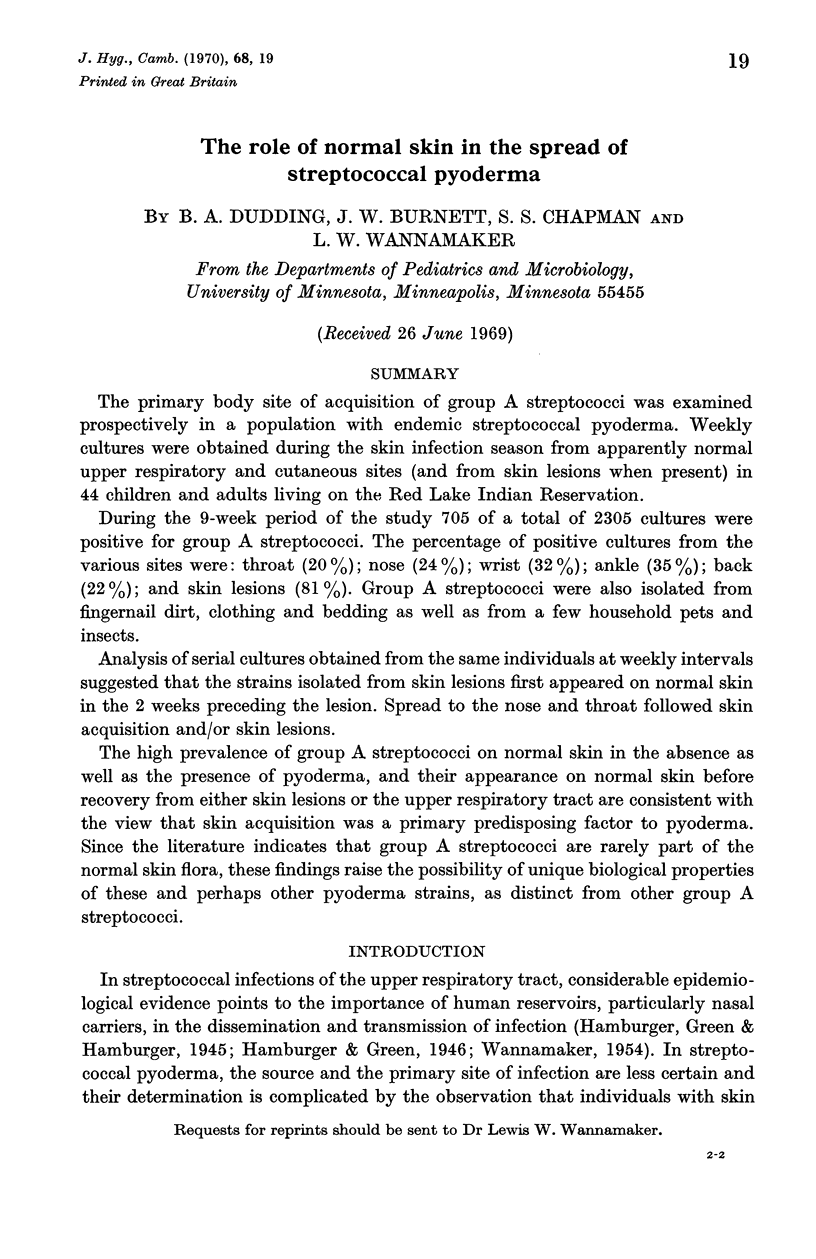
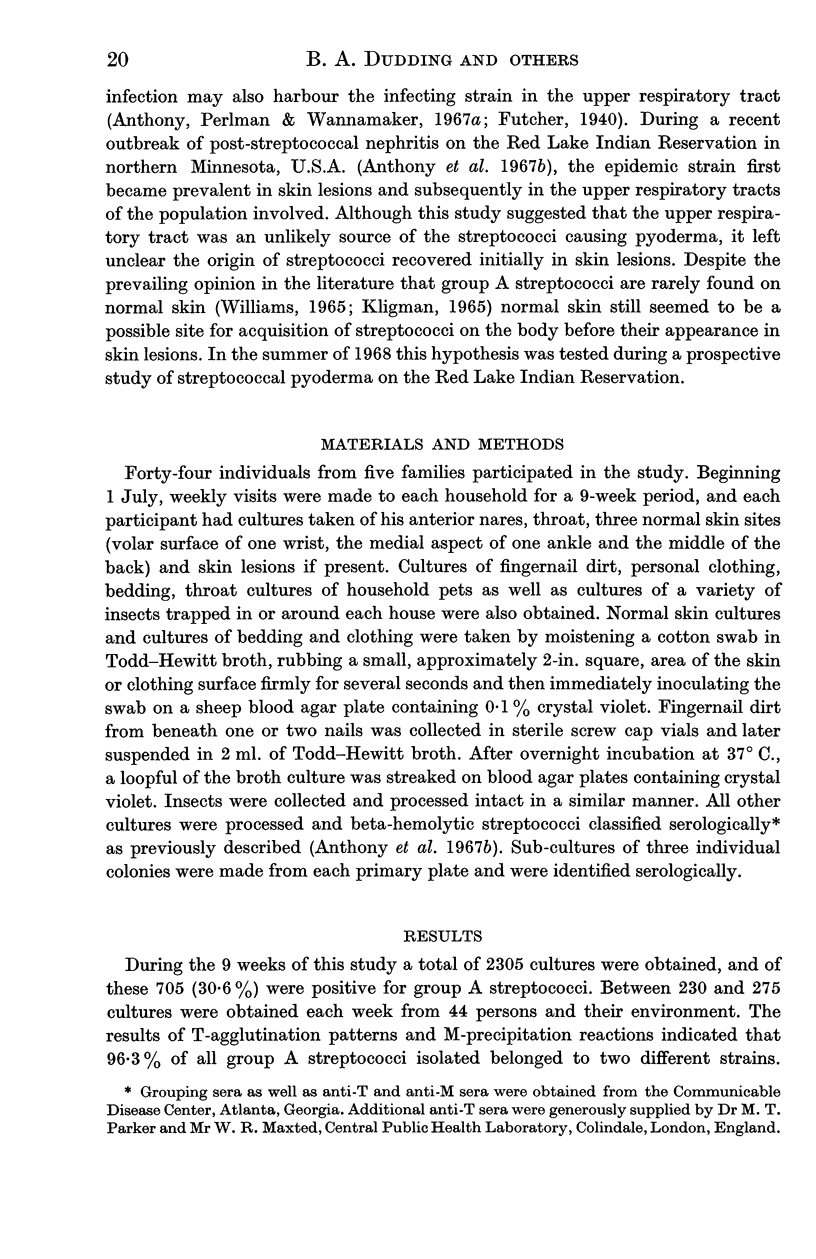
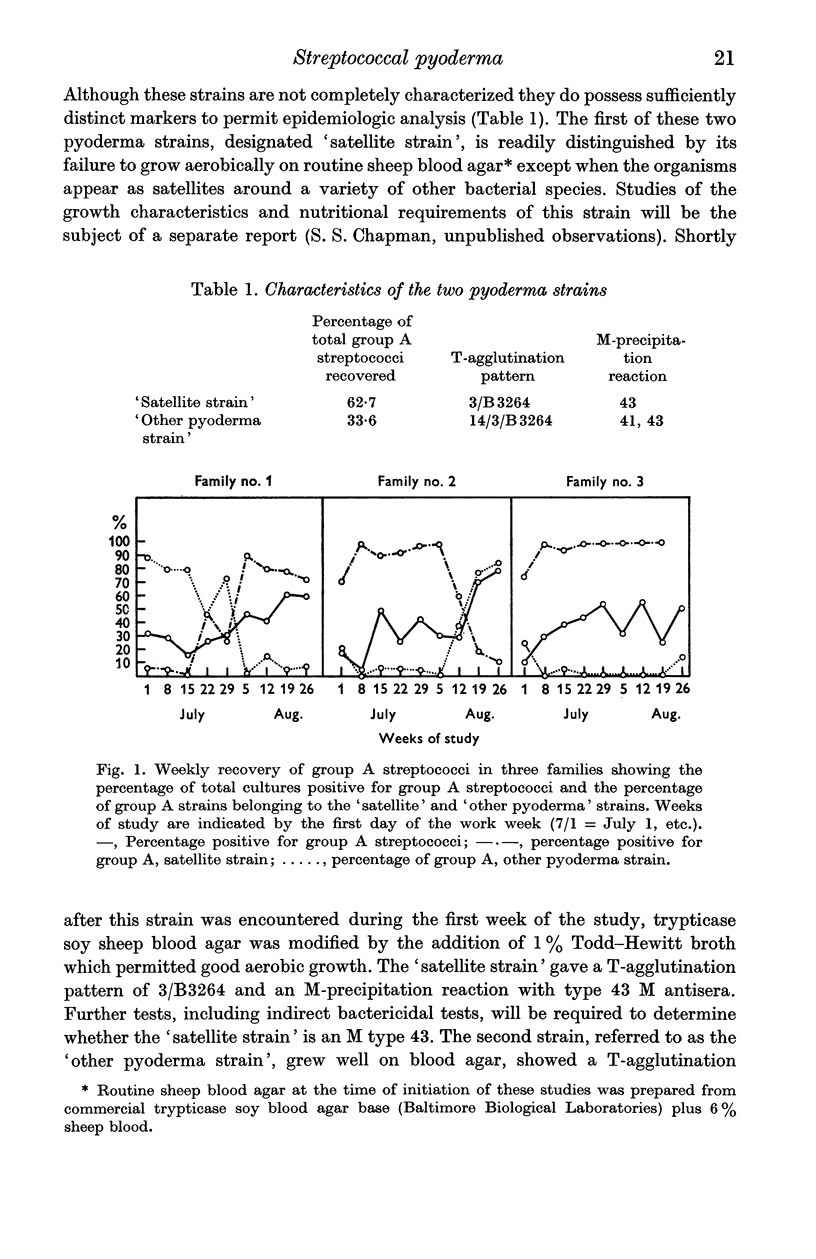
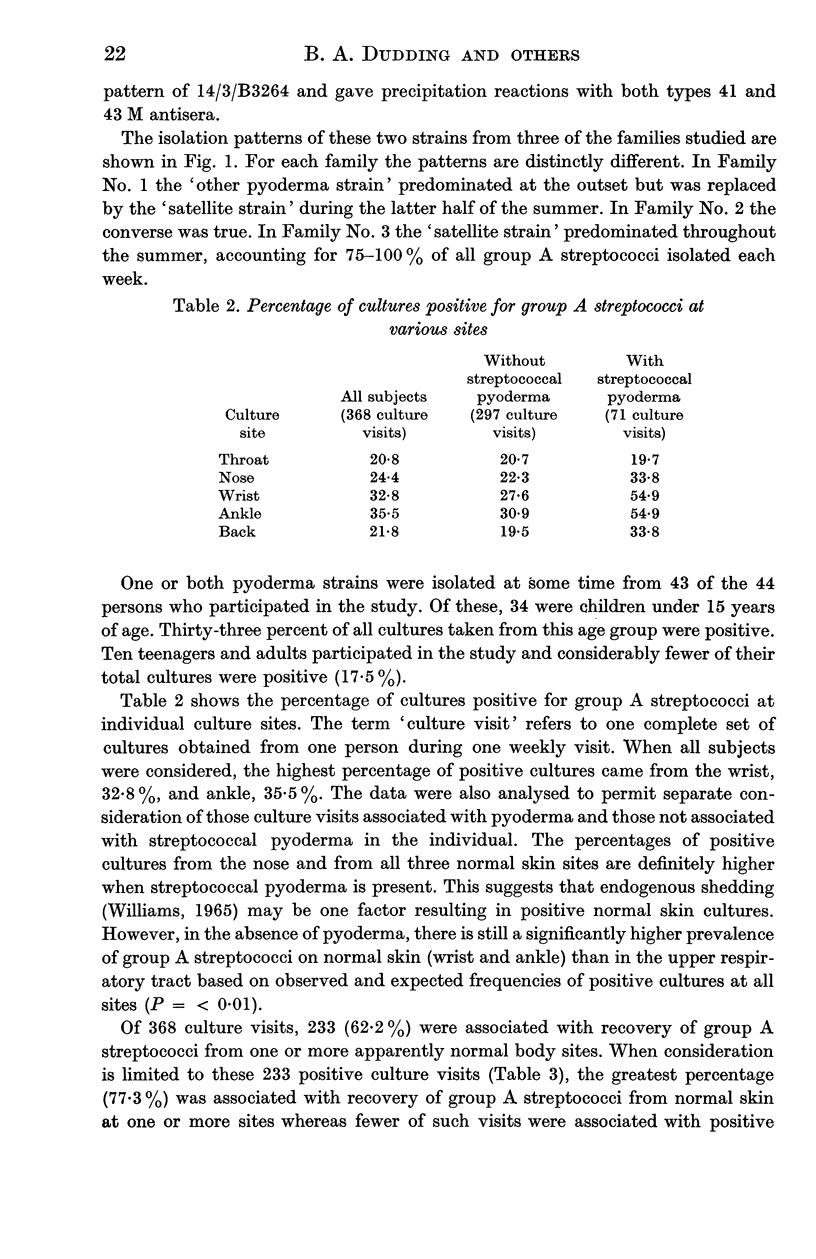
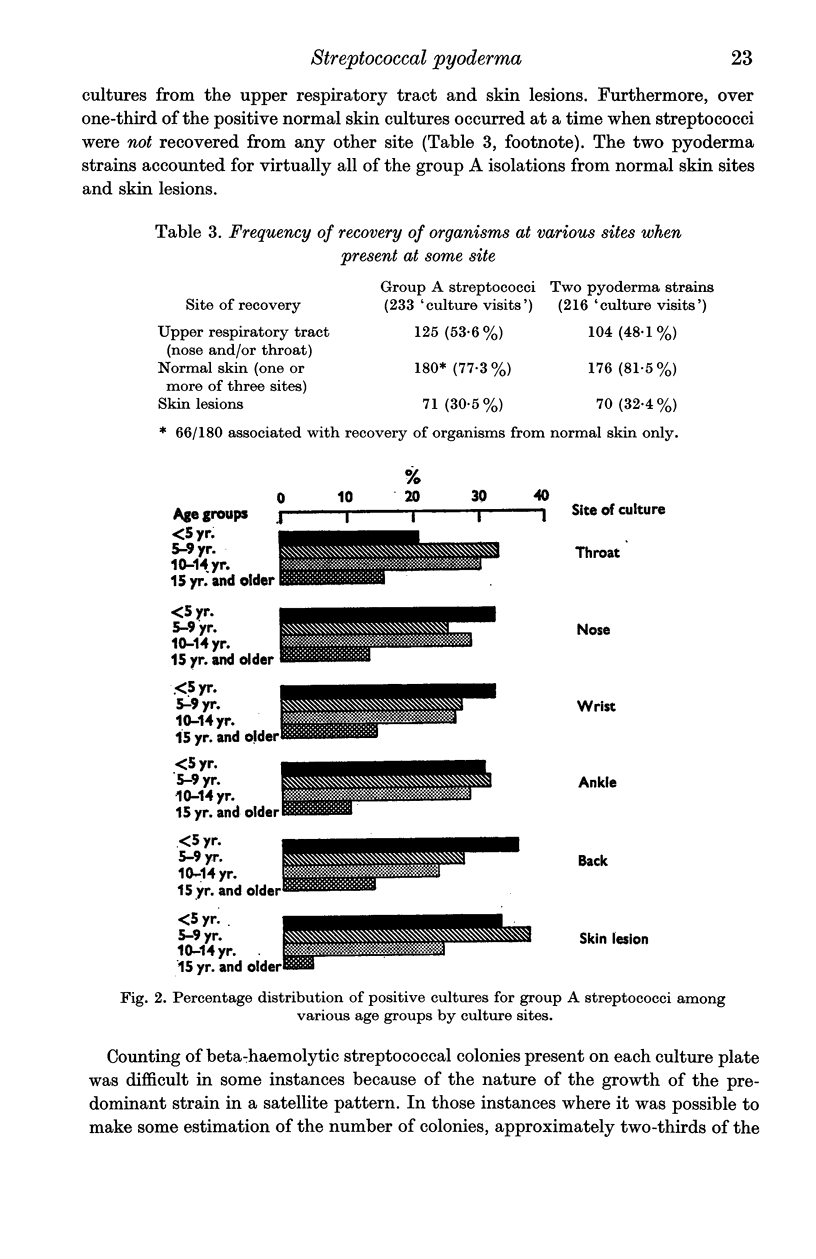
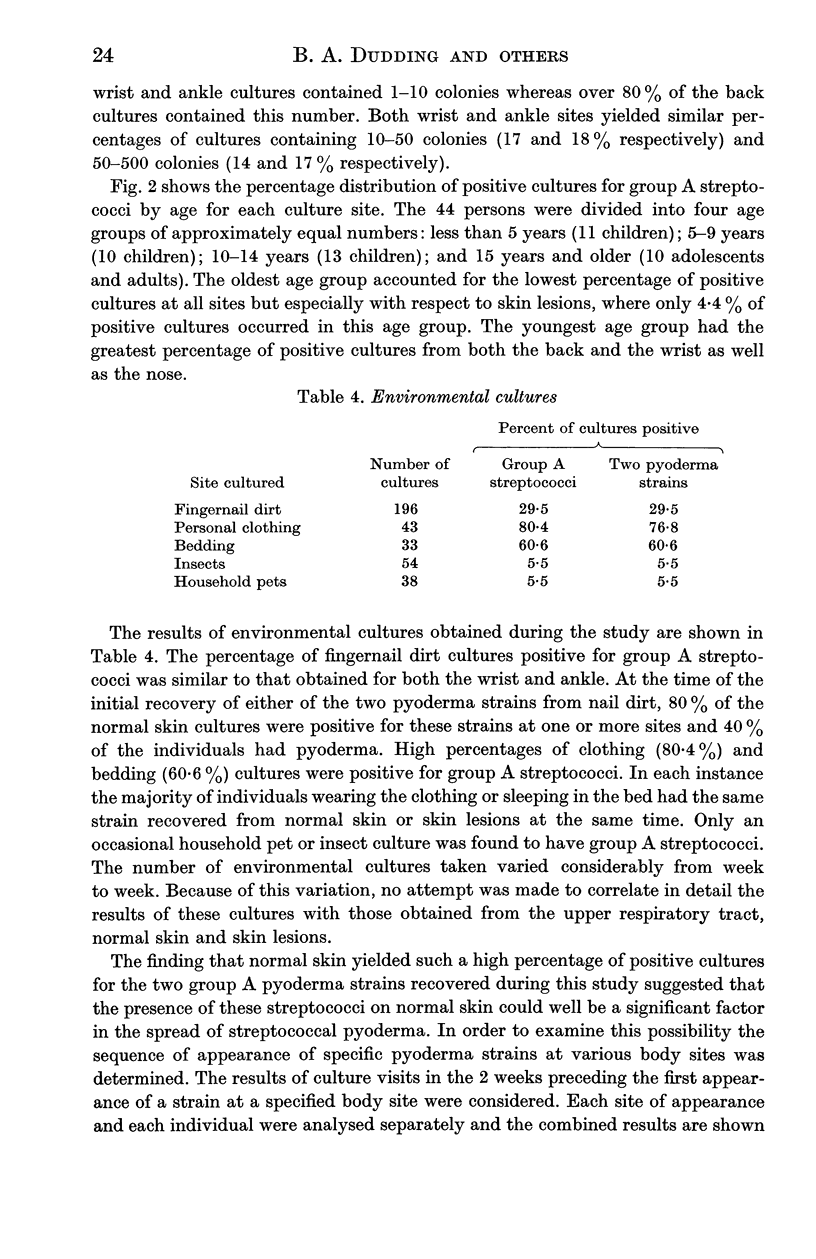
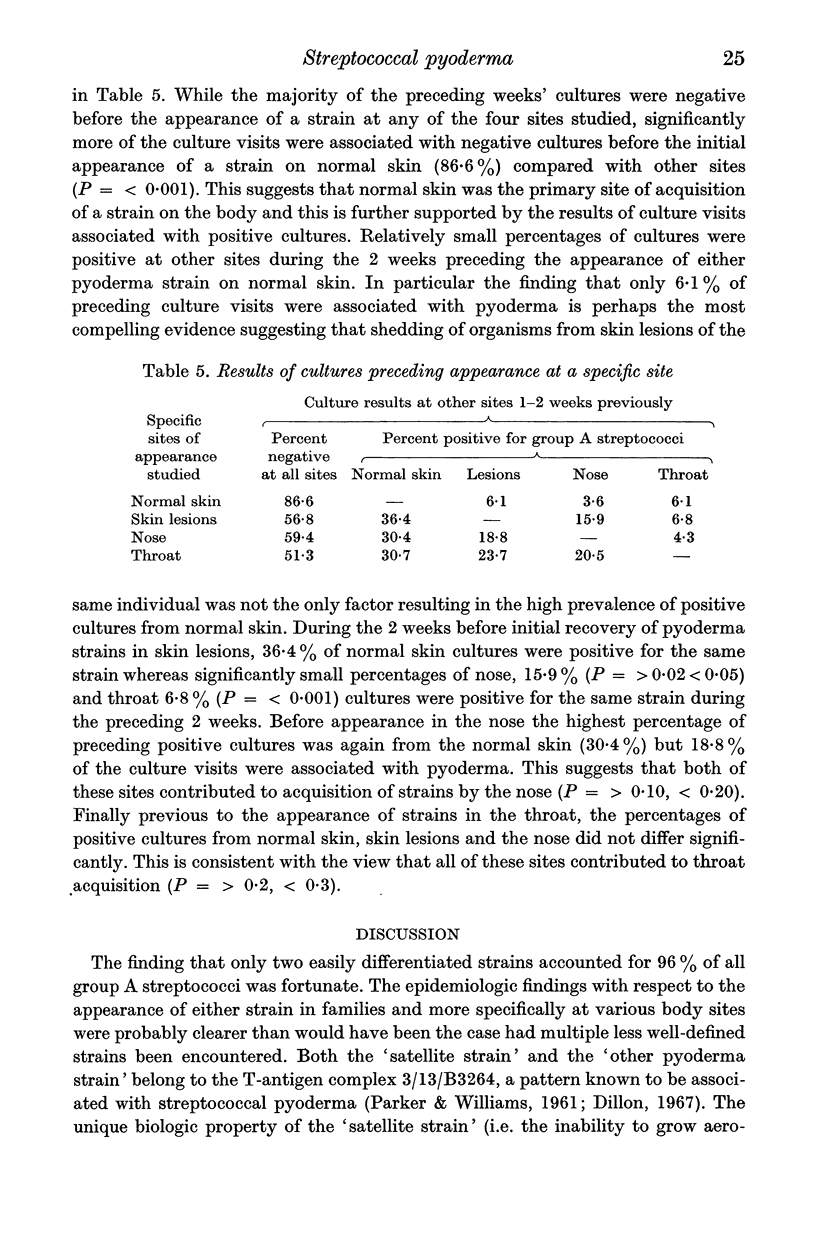
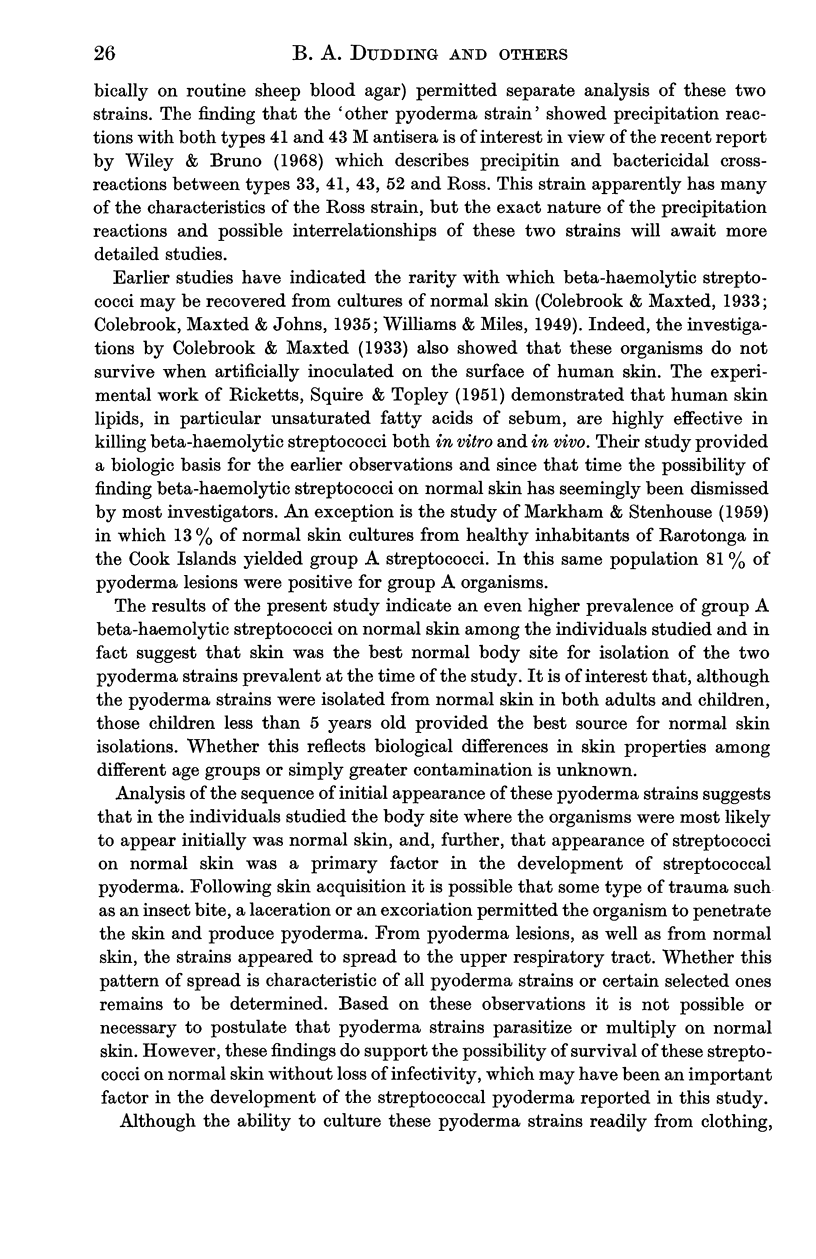
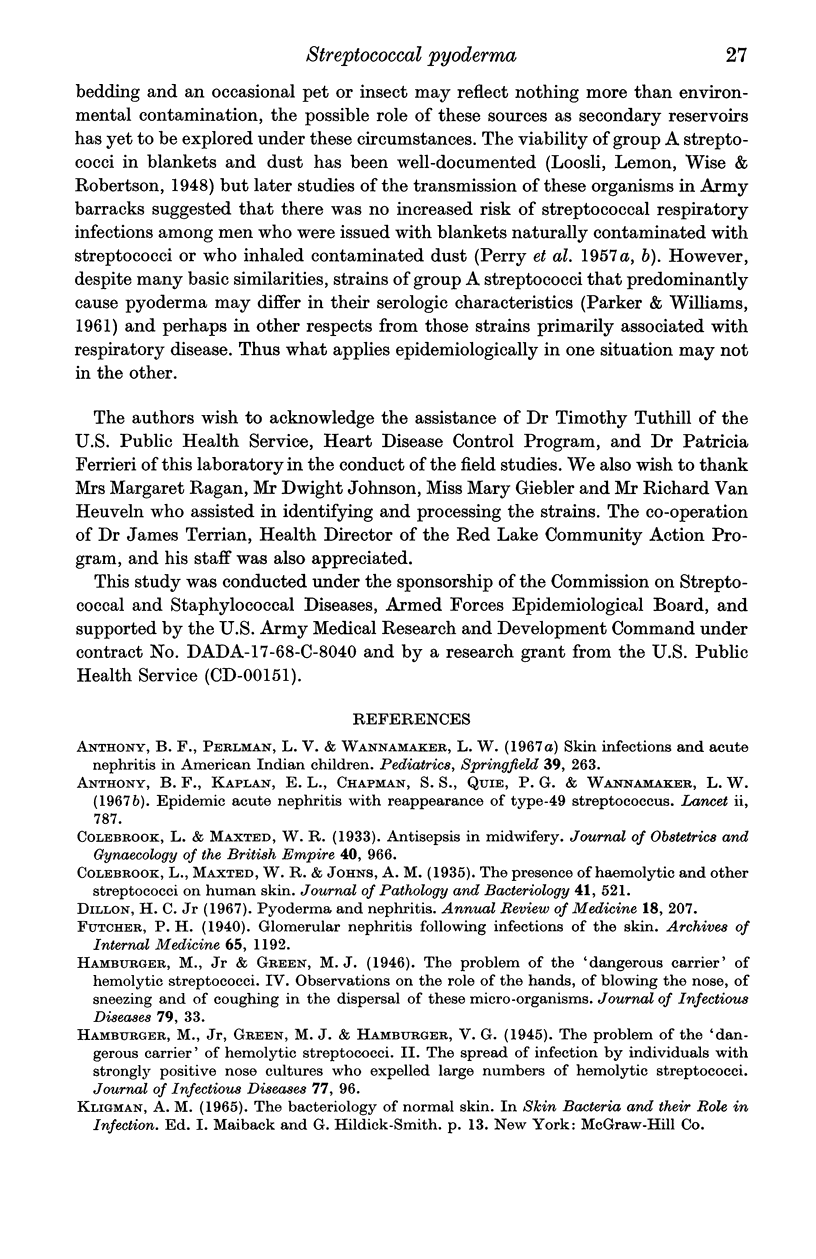
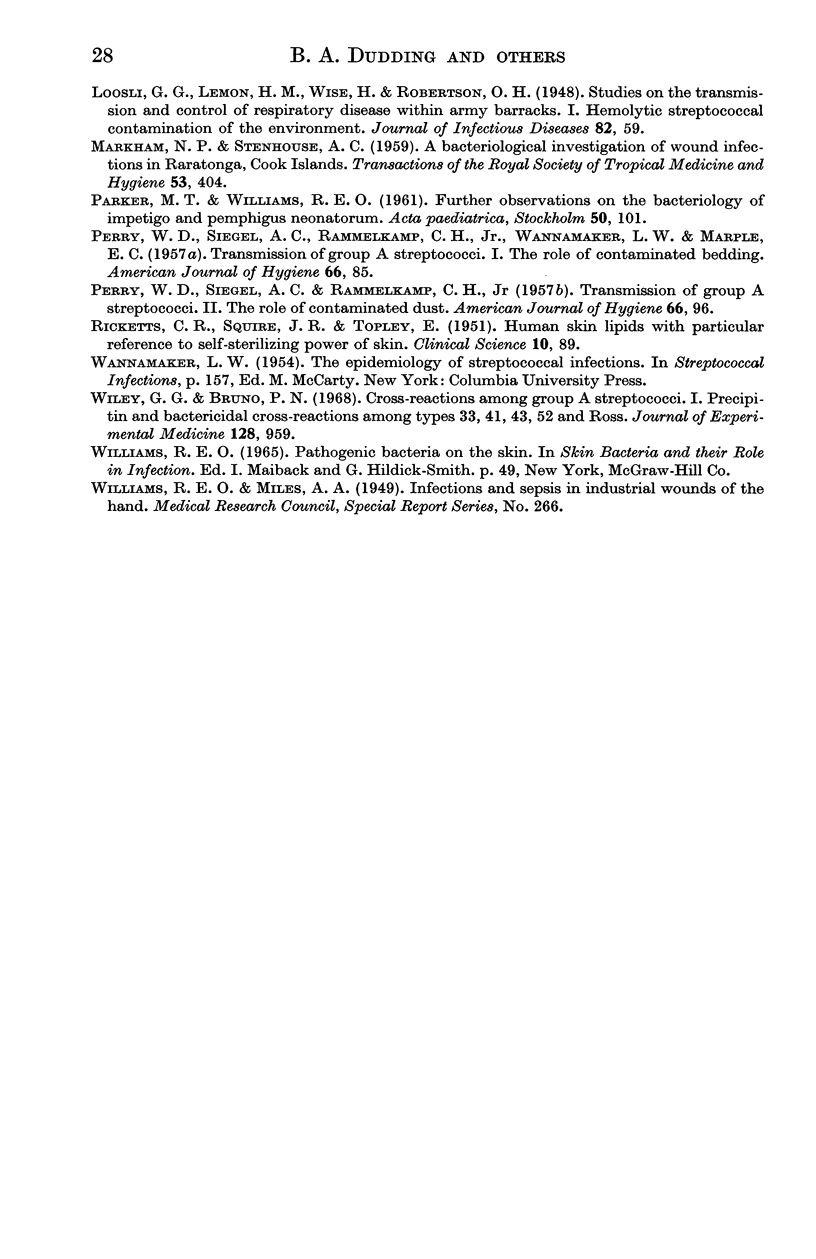
Selected References
These references are in PubMed. This may not be the complete list of references from this article.
- Anthony B. F., Perlman L. V., Wannamaker L. W. Skin infections and acute nephritis in American Indian children. Pediatrics. 1967 Feb;39(2):263–279. [PubMed] [Google Scholar]
- Dillon H. C., Jr Pyoderma and nephritis. Annu Rev Med. 1967;18:207–218. doi: 10.1146/annurev.me.18.020167.001231. [DOI] [PubMed] [Google Scholar]
- MARKHAM N. P., STENHOUSE A. C. A bacteriological investigation of wound infections in Rarotonga, Cook Islands. Trans R Soc Trop Med Hyg. 1959 Sep;53:404–409. doi: 10.1016/0035-9203(59)90042-2. [DOI] [PubMed] [Google Scholar]
- PARKER M. T., WILLIAMS R. E. Further observations on the bacteriology of impetigo and pemphigus neonatorum. Acta Paediatr. 1961 Mar;50:101–112. doi: 10.1111/j.1651-2227.1961.tb08028.x. [DOI] [PubMed] [Google Scholar]
- PERRY W. D., SIEGEL A. C., RAMMELKAMP C. H., Jr Transmission of group A streptococci. II. The role of contaminated dust. Am J Hyg. 1957 Jul;66(1):96–101. doi: 10.1093/oxfordjournals.aje.a119889. [DOI] [PubMed] [Google Scholar]
- Wiley G. G., Bruno P. N. Cross-reactions among Group A streptococci. I. Precipitin and bactericidal cross-reactions among types 33, 41, 43, 52, and Ross. J Exp Med. 1968 Nov 1;128(5):959–968. doi: 10.1084/jem.128.5.959. [DOI] [PMC free article] [PubMed] [Google Scholar]


